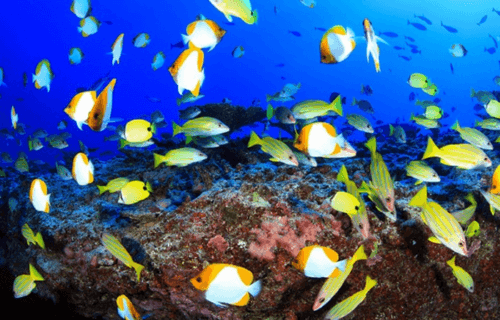RIVERSIDE, Calif. — Continental movement is not a new topic. Earth’s major land masses have been drifting across the planet for billions of years. Researchers from UC Riverside say there’s a hidden benefit to this, as the process fills Earth’s oceans with oxygen that supports life. However, their new study warns that continental drift may also end up killing off all life that lives deep below the sea.
“Continental drift seems so slow, like nothing drastic could come from it, but when the ocean is primed, even a seemingly tiny event could trigger the widespread death of marine life,” says UC Riverside geologist and study co-author Andy Ridgwell in a university release.
Researchers explain that water at the ocean’s surface gets colder and denser as you approach the north and south pole, and then sinks. As the water sinks, it transports oxygen from the atmosphere to the ocean floor.
Eventually, a return flow carries nutrients from sunken organic matter to the ocean’s surface. All of this fuels the growth of plankton, which is a key part of the marine food web. This whole process supports the vast diversity of fish and other animals in the ocean.
Now, the new study finds this cycle of oxygen and nutrients could suddenly end under certain conditions. Using complex computer models, they found that the location of continental plates actually affects how oceans move oxygen.
“Many millions of years ago, not so long after animal life in the ocean got started, the entire global ocean circulation seemed to periodically shut down,” says Ridgwell. “We were not expecting to find that the movement of continents could cause surface waters and oxygen to stop sinking, and possibly dramatically affecting the way life evolved on Earth.”
Oxygen changes are a ‘death sentence’ for life in the ocean
Older models on the evolution of marine oxygen did not account for ocean circulation over the last 540 million years. In those studies, ocean anoxia — times when oceanic oxygen levels dropped off — suggested that there was also a drop in atmospheric oxygen.
“Scientists previously assumed that changing oxygen levels in the ocean mostly reflected similar fluctuations in the atmosphere,” explains Alexandre Pohl, a former UCR paleoclimate modeler, now at Université Bourgogne Franche-Comté in France.
In this new study, however, researchers used a model that represented the oceans in three dimensions. The results show that the collapse of global water circulation would trigger an extreme separation between oxygen levels in the upper and lower depths of the oceans.
When this took place in the past, that divergence meant the entire ocean seafloor lost oxygen for tens of millions of years. It only started to gain it back about 440 million years ago.
“Circulation collapse would have been a death sentence for anything that could not swim closer to the surface and the life-giving oxygen still present in the atmosphere,” Ridgwell says.
Scientists know that bizarre-looking fish, giant worms, crustaceans, squid, sponges live deep down in the oceans, but the entire marine life picture at those depths is still a mystery.
When could this happen again?
The new study does not spell out a specific timeframe for when another catastrophic event like this could occur, but their models do suggest where such an event could take place.
Their climate models say that increasing rates of global warming weaken ocean circulation. In some models, an eventual oxygen collapse could start in the North Atlantic.
“We’d need a higher resolution climate model to predict a mass extinction event,” Ridgwell explains. “That said, we do already have concerns about water circulation in the North Atlantic today, and there is evidence that the flow of water to depth is declining.”
In theory, study authors believe an unusually warm summer or the erosion of a cliff could set off a domino effect that devastates ocean life again.
“You’d think the surface of the ocean, the bit you might surf or sail on, is where all the action is. But underneath, the ocean is tirelessly working away, providing vital oxygen to animals in the dark depths,” Ridgwell concludes. “The ocean allows life to flourish, but it can take that life away again. Nothing rules that out as continental plates continue to move.”
The findings are published in the journal Nature.

